Description
This sensor-to-CAN module generates analogue, digital and pulse measurements from 8 input channels - and outputs the data via the CAN bus. The module is 100% self-contained, no PC required. The compact device offers professional specifications including high accuracy and high frequency sampling - as well as configurable input ranges and digital thresholds.
The module can be integrated into any CAN bus to provide data for ECUs or CAN tools. For example, you can use the module as an add-on for the CANedge from CSS Electronics.
Features
Standalone - no PC required. Integrate it into any CAN bus to add input sensor data. DBC included
COMPACT
7 x 2 x 5 cm. 70G. 8 LEDs. 5-26 V DC via DB9. 3.3V excitation signals. USB for configuration/FW/stream8 X ANALOG
8 analogue input channels (1 kHz, 10 bit). Configurable voltage ranges (0-0.625 V to 0-10 V)+DIGITAL
Digital input display for each channel. 1 kHz. Configurable low/high/hysteresis values+PULSE
Pulse input value of each channel. 16 kHz. Frequency or counter mode (up to 32 bits)CONFIGURABLE
Configure sensors, CAN IDs, bit rate, frequencies and more via JSON configuration and GUI
Easily add analogue/digital/pulse data to any CAN bus system
Add analogue/digital/pulse data to your CAN bus via 8 input channels - e.g. for use by ECUs or CAN hardware.
- Powerful parallel sampling of analogue/digital/pulse signals
- Configure the input range for optimum resolution/amplification
- Configure digital high/low levels incl. optional hysteresis
- Connect sensors quickly via the optional DB25 input adapter cable
- Optional output of signals via CAN FD for fewer frames
- Link multiple modules for 16, 24, 32, ... Channels
- Special excitation signal to supply input sensors (~3.3 V)
- Supply the device with 5-26 V DC via standard DB9 adapter cable
- Optionally, you can record the data via any CAN interface/logger/... record the data.
- DBC file included for easy decoding into a human readable form
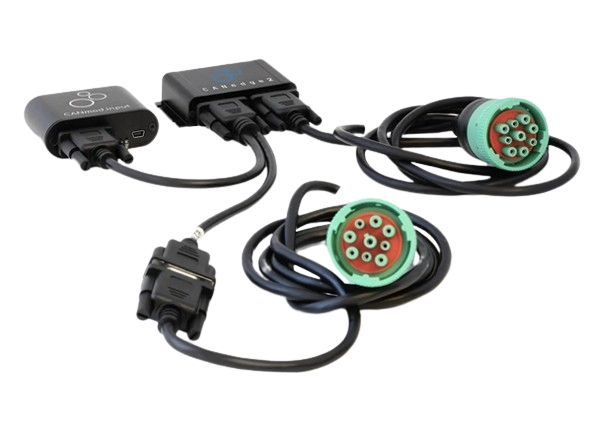
Example: Logging/streaming sensor data
The CANmod.input is often used as an "add-on" for the CANedge . With this setup you can, for example, record vehicle data via channel 1 and analogue/digital/pulse data via channel 2. The data can be easily DBC decoded, for example via the asammdf GUI, Python or MATLAB.
You can also stream the sensor data with SavvyCAN in real time via USB to display raw/decoded data (e.g. via graphs) - ideal for validating your setup before deployment or for lab testing.
Connection of sensors
Connecting digital sensors
Sensors with digital outputs include Hall-effect switches, buttons (e.g. for registering events), reed switches (e.g. for registering the door/valve/latch position), resistance-to-digital sensors (RTD) and more. Many sensors with analogue outputs also generate optional digital outputs.

Connecting pulse sensors (frequency, counter)
Sensors with pulse-oriented outputs include speed sensors (e.g. Hall-effect frequency sensors), rotary position sensors, buttons and toggle switches (event counters), frequency meters and sensors that generate outputs with pulse width modulation (PWM), for example.

Connecting analogue sensors
Sensors that generate analogue outputs include force/pressure (load cells), current, distance (ultrasound, laser, lidar, infrared), rotation (potentiometer), temperature, Hall effect, magnometers, humidity, sound, atmospheric pressure, acceleration, gyroscopes - and many more.

Technical Data
| Model specification | 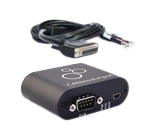 CANmod.input |
|---|---|
| Functionality | The device generates analogue/digital/pulse data from 8 input sensors and outputs them via CAN/USB |
| Included | CANmod. input module and USB dust cover (input sensors and mini-USB adapter not included) |
| Firmware | Supports free firmware updates via USB to add functions |
| Configuration | Configuration files based on the popular open source -JSON schema concept (similar to CANedge) |
| Software | Free open source editor tool for easy device configuration (offline/online version available) |
| Safety and security | CE, FCC, IC and RoHS certified (certificates can be found in the documents) |
| Warranty | 1 year warranty |
| Support | Free, fast and high-quality support |
| Country of origin | Denmark |
| Channels | Supports 8 input channels |
| Sensor types | All 8 input channels support analogue, digital and pulse sensors |
| Sampling method | Each input channel samples both the analogue, digital and pulse signal of the connected sensor |
| Input range | Configurable input ranges (0-10 V, 0-5 V, 0-2.5 V, 0-1.25 V, 0-0.625 V) |
| Input resolution | 10 bit |
| Sampling frequency | Analogue inputs: 1 kHz | Digital: 1 kHz | Pulse (frequency/counter): 16 kHz |
| Digital thresholds | Configurable digital high/low switching thresholds (0-100 %) incl. optional dead zone/hysteresis |
| Pulse modes | Pulse inputs can be measured as frequencies (reset) or counters (accumulate). |
| Pulse resolution | Up to 32 bits (4,294,967,294) |
| Protection | The sensor inputs are protected against overvoltage and undervoltage |
| Input impedance | 136K |
| CAN signals | The module outputs sensor data via CAN messages/signals (complete list can be found in the documentation or DBC file). Analogue measurements are output in millivolts (mV) [1000 Hz]. Digital measured values are output as "actual" (dead zone, low, high) and "low"/"high" signals [1000 Hz]. Pulse measurements are output as frequency/counter value (for reset/accumulation mode) [1000 Hz] |
| Channels | 1 x CAN channel |
| Modes | The device can either send the data to the CAN bus or provide it on request |
| Standard | ISO 11898: Compliant with CAN (baud rates between 5K and 1 Mbit/s) and CAN FD (1M, 2M, 4M) |
| Identifiers | Compliant with CAN specifications 2.0A (11-bit ID) and 2.0B (29-bit ID) |
| Termination | Termination can be changed using the switch under the DB9 connection |
| Retransmission | Retransmission of frames that have lost arbitration or have been disturbed by errors |
| Transceiver protection | Protection: +/- 25 kV HBM ESD, +/-12 kV IEC ESD, +/-14 V bus error, short circuit Common mode input voltage: +/-12 V TXD-dominant timeout (prevents network blocking in the event of an error) |
| Bit rate | Choose between standard bit rates (5K to 1M) or use customised bit timing |
| Enable Disable | Enable/disable each CAN message individually |
| Identifier customisation | Configure each CAN ID individually (11-bit or 29-bit) |
| Push/poll mode | Configure individual "trigger" modes for each CAN message (push or poll). |
| Frequency | Configure the pre-scaling of each CAN message frequency individually to lower rates |
| Input supply | +5V to +26V DC via the DB9 connector (power supply via pin 1 or pin 9) Alternatively, power supply via USB (for updating firmware/configuration or streaming data in real time) |
| Power consumption | Extremely low (<1 W) - no risk of battery discharge |
| Protection | Reverse polarity protection of the CAN bus supply Protection against transient voltage events on supply lines |
| Housing and weight | Compact aluminium housing: 52.5 x 70.0 x 24.5 mm (L x W x H), 70 grams |
| Connection (front) | 1 x standard D-Sub 9 connector (DB9). |
| Connection (rear) | 1 x D-Sub 25 (DB25) connector |
| Sensor supply | Dedicated excitation signals for each channel (~3.3 V, common maximum of 100 mA) |
| Pin assignment | Information on the pin assignments of the DB9/DB25 connector can be found in the product manual |
| USB PORT | Standard mini-USB port for configuration/firmware updates and streaming (USB cable not included) |
| LEDs | Module status via 8 external LEDs: Power, CAN bus, memory, status, CH1/CH2, CH3/CH4, CH5/CH6, CH7/CH8 |
| Temperature | Operating temperature (CANmod. input module): -25 °C to +70 °C |
| IP rating | IP protection class 40 |
| Mounting | The module can be mounted using robust double-sided adhesive tape, cable ties or a mounting bracket, for example |

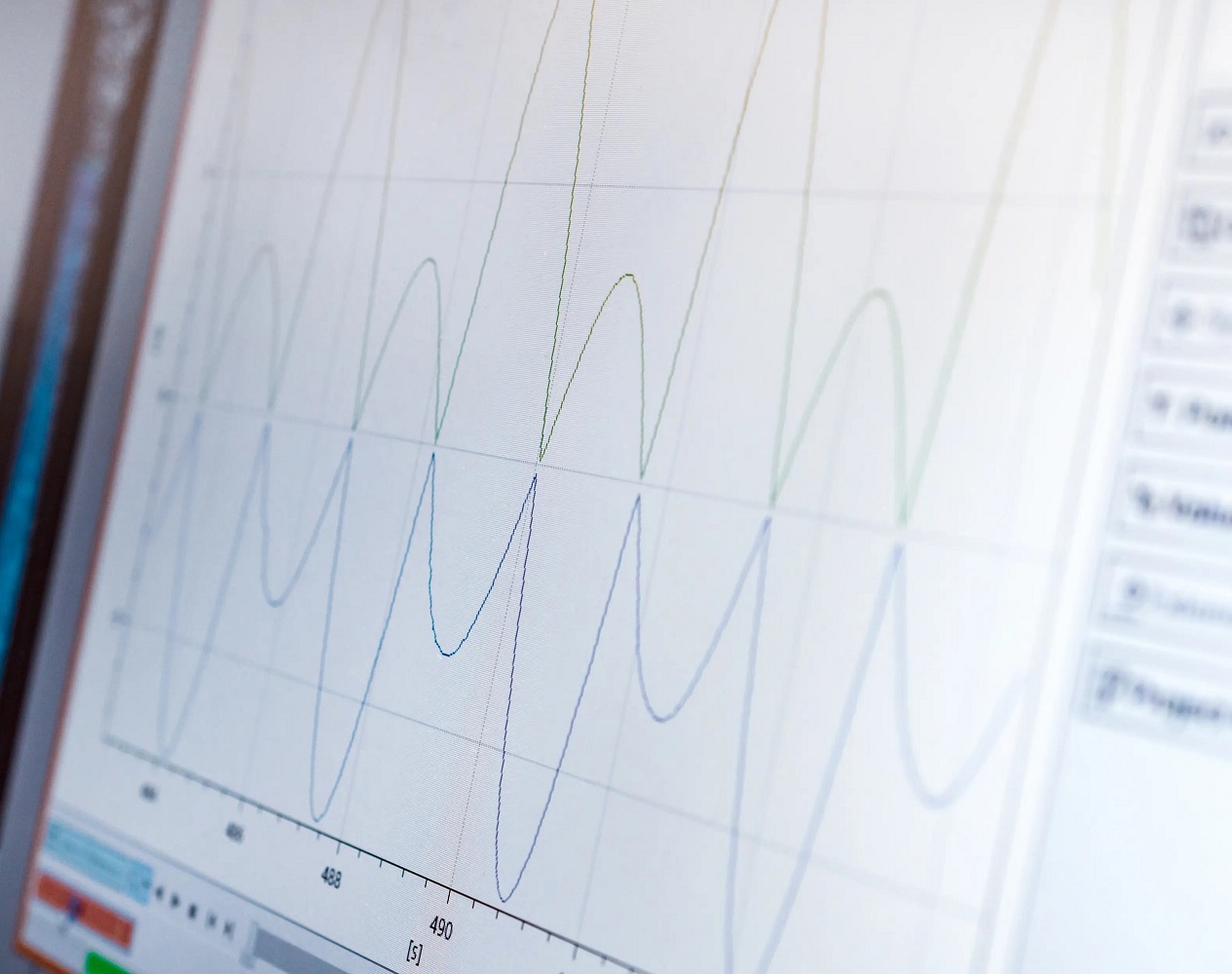


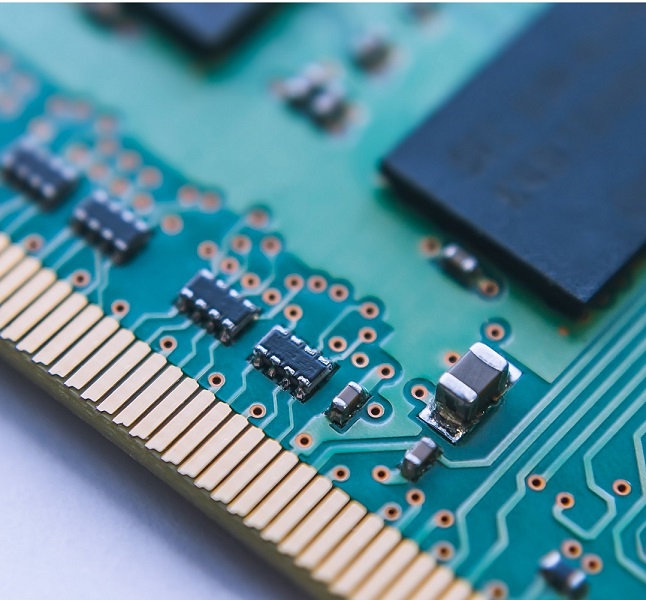



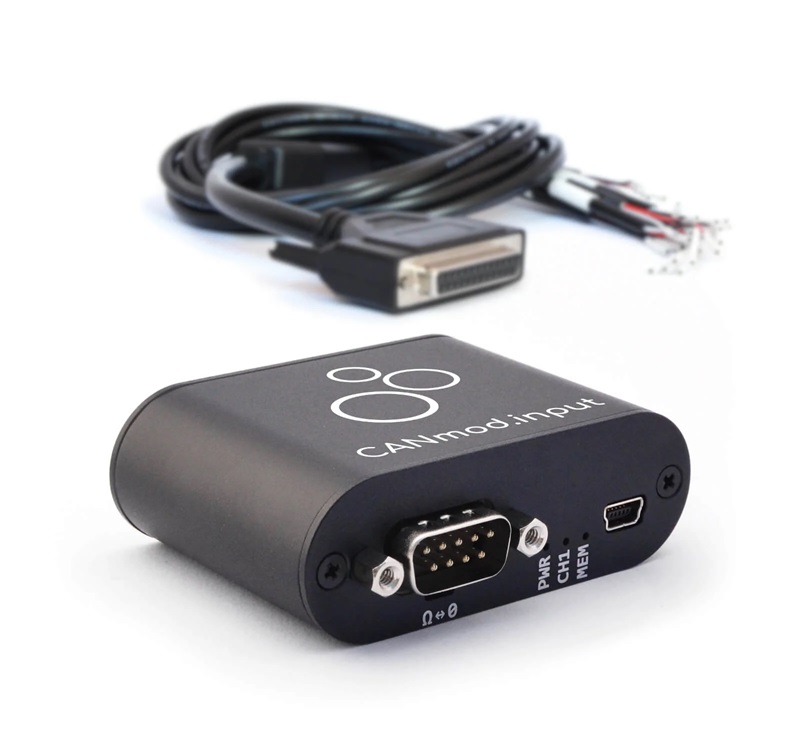

.jpg)
.jpg)
.jpg)
.jpg)